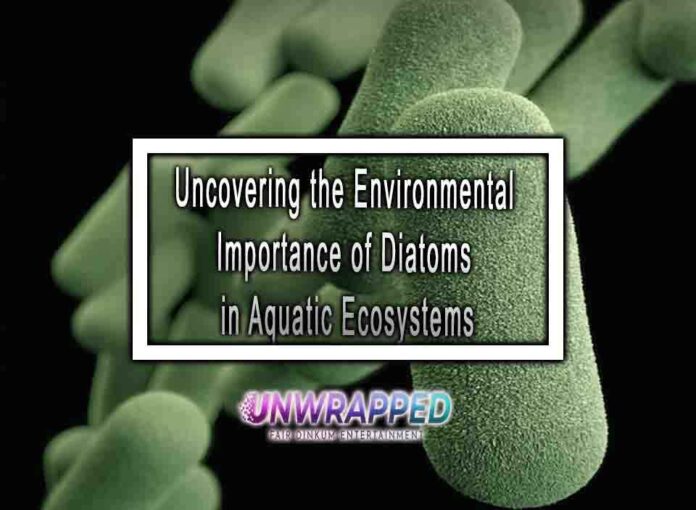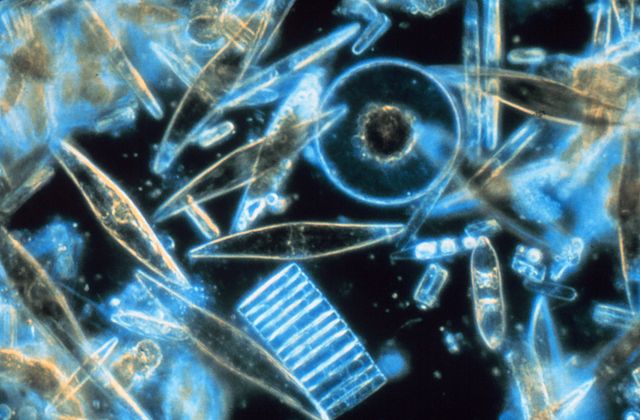Diatoms are a group of microalgae that play a crucial role in aquatic ecosystems, particularly in freshwater and marine environments. Their significance extends beyond being just primary producers; diatoms contribute to various ecological processes, nutrient cycling, and the overall health of aquatic ecosystems. Here’s an exploration of the environmental importance of diatoms:
1. Primary Producers:
- Diatoms are primary producers in aquatic food webs. Through photosynthesis, they convert carbon dioxide and sunlight into organic compounds, providing a foundational energy source for the entire ecosystem.

2. Oxygen Production:
- Like other photosynthetic organisms, diatoms release oxygen as a byproduct of photosynthesis. They contribute significantly to the oxygen levels in aquatic environments, supporting the respiration of other organisms.
3. Nutrient Cycling – Silica Uptake:
- Diatoms are unique among phytoplankton in their ability to take up silica from the water and incorporate it into their cell walls, forming intricate silica frustules. This silica uptake is a crucial aspect of nutrient cycling in aquatic systems.
4. Carbon Sequestration:
- Diatoms contribute to carbon sequestration by fixing carbon dioxide during photosynthesis. When diatoms die, their sinking biomass transports carbon from the surface waters to the deeper layers of the ocean, contributing to the ocean’s role as a carbon sink.
5. Base of Food Webs:
- Diatoms serve as a primary food source for various aquatic organisms, including zooplankton, small fish, and invertebrates. The nutritional value of diatoms, along with their abundance, makes them essential for the growth and survival of higher trophic levels in the ecosystem.
6. Indicator Species for Water Quality:
- Certain diatom species are used as bioindicators for water quality assessment. Their presence, abundance, and species composition can reflect the ecological condition of aquatic environments. Changes in diatom communities may indicate shifts in water quality or ecosystem health.
7. Diatom Blooms and Productivity:
- Diatom blooms, characterized by a rapid increase in diatom abundance, can occur in response to favorable conditions. These blooms contribute to high levels of primary productivity in aquatic ecosystems, providing a temporary surge in food resources for other organisms.
8. Benthic Diatoms and Substrate Stability:
- Benthic diatoms, which inhabit the sediments of aquatic ecosystems, play a role in stabilizing substrates. Their mucilage and extracellular polymeric substances contribute to sediment cohesion, reducing the likelihood of erosion.
9. Aquaculture and Fisheries Support:
- Diatoms are used in aquaculture as a natural feed source for larval stages of various aquatic species. Their nutritional value and small size make them suitable for enhancing the growth of fish and invertebrates in aquaculture settings.
Conclusion:
Diatoms are fundamental components of aquatic ecosystems, driving primary production, nutrient cycling, and providing essential resources for the diverse life forms that inhabit these environments. Understanding the environmental importance of diatoms is crucial for conservation efforts, water quality management, and sustaining the health and productivity of aquatic ecosystems.











